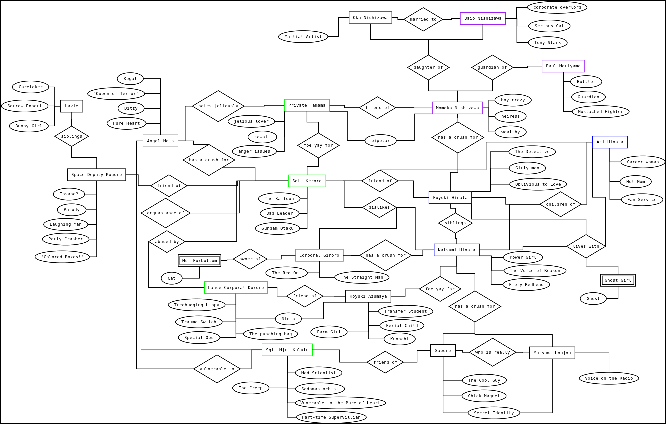March 12, 2012
Entity Relationships
Today is a slow day. I know I have better things to do but for some reason it is so nice outside. (I should really upload some pictures later. Stay tuned for that!) It just makes you want to slack off.
Case in point, today's post is part slacking-off and part portfolio submission.
If there is one of the few joys in life it is being able to set aside $8 each month for a Netflix subscription. Netflix offers a lot of content that just doesn't seem to be aired on TV. Perhaps there's not enough interest. But more than likely, it is cheaper to just hire some people nobody is interested in to create a crappy reality TV show. ("Today on the History Channel: Rednecks making moonshine! It's tradition!" Seriously?)
Netflix is popular because the audience is in control of the programming. They can watch whatever they want as much as they want as many times as they want. Some ISPs, especially the Kardashian-controlled Comcast, don't really like it because it is an alternative to watching their family trainwreck on five separate channels (E!, Bravo, Oxygen, Lifetime, and G4?) that nobody would watch if they didn't control Internet usage by avoiding necessary equiment upgrades needed to handle such bandwith. And they expect other ISPs to get on board with this. And they wonder why hacking is becoming more popular.
One of the genre's of that Netflix hosts, that TV rarely does these days, in Japanese Anime. While the TV set has people associating anime with kids shows, ADHD, and stereotypical martial arts, the Internet gets to see everything else anime has to offer, which is great considering I've never liked any of the Dragonball series. (Too much yelling and the story is so very slow! A half-hours worth content is streched out for a month with commercials on TV, of which 20 minutes of every hour is devoted to advertising.)
So this afternoon I decided to play around with Dia, which I think I may have mentioned before and how it is like Microsoft Visio or Rational Rose. Today I decided to make a Entity Relationship (ER) diagram mapping out the relationship of the characters from the anime Keroro Gunso or as it is called here in the United States Sgt. Frog. I spent the last couple of months watching this anime comedy on Netflix, which the rest of the series has yet to be uploaded. I really liked it and hope that Funimation can get the rights to the rest of the series.
So today, I was browsing the Internet and I though about how I could create another example for my portfolio. This ER diagram this the product of what happens when one inspires the creation of something else. (See Everything is a Remix by Kirby Ferguson.)

Sometimes a good idea can be developed from the use of other ideas and those ideas go one to inspire other ideas. The film The Matrix had been influneced by a lot of other science fiction, martial arts films, and anime as Ferguson points out. Yet, because of these influences, a creative blockbuster film was developed. (It's a shame the other two films weren't as much--in fact, don't see the other two.) But that is what made it such an outstanding film other than the groundbreaking special effects and innovative cinematography techniques.
Generally in a more professional element, ER Diagrams would indicate how customers are related to the products they buy. More throughly, how customer information is logged into a database, how products are listed in the database, what products the customer wants to buy, and how they buy them.
The entities (the squares) are generally used to identify objects. The relationships (the rhomobuses) how they are related to each other and generally used to identify actions. Attributes (the ellipses) are used to describe the enetities. I guess if it were acceptable, attributes could be used on relationships too, much like an adverb is used to describe an action.
Perhaps later I could post an ER diagram to describe these objects as they are used in English grammar. We know that in every entity-relation, there are there are the nouns (entities), verbs (relationships), direct objects (a noun/entity aslo attached to a verb/relationship), and adjectives (attributes).
Using these structures, we can develop databases, create forms for webpages, and process data between the client and the server.
Of course, in business, the diagrams would be more complex, which is probably where UML comes in handy.


